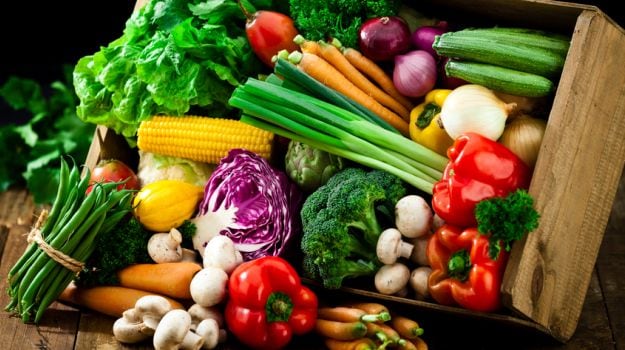The Future of Vegetables is Ugly
 The future of produce is ugly. Twisted, blemished, mutated and deformed, to be specific.
The future of produce is ugly. Twisted, blemished, mutated and deformed, to be specific.
That’s because an increasing number of grocery chains and crop-sharing services have begun stocking and distributing fruits and vegetables once deemed unfit for sale based solely on appearance. To be clear, these goods aren’t damaged or rotten or distasteful. If a chef chopped them up and served them in a souffle, most would never know the difference. Their banishment from shelves was purely produce prejudice.
In recent years, a small number of eco-conscious consumers have begun buying imperfect produce, often at discounted prices, in an effort to chip away at the planet’s staggering level of food waste. Now, the buy-ugly movement has been thrust into the mainstream. Walmart, the nation’s largest grocer with more than 4,000 produce-selling stores, announced last week it would sell less-than-pretty apples in 300 stores across Florida. This builds on an ugly-potato program the retail behemoth launched in Britain earlier this year.
By virtue of its size, when Walmart makes a change, the broader retail sector notices. The company commands a massive and global supply chain and possesses tremendous purchasing power, a combination that allows it to disrupt traditional distribution channels and create demand for products where there once was none. And food is big business for Walmart. Groceries accounted for 56 percent of all sales in the company’s U.S. stores each of the past three years, according to Securities and Exchange Commission filings.
Walmart’s program “is a result of working with our suppliers to build the infrastructure and processes that create a new home for perfectly imperfect produce,” Shawn Baldwin, Walmart’s senior vice president for global food sourcing, produce and floral, wrote on the company’s blog. “Because ugly produce can occur unexpectedly in any growing season or crop, we want to have the systems in place to offer this type of produce whenever it may occur.”
Walmart is hardly alone in its embrace of ugly fruits and vegetables. Whole Foods has sold similar goods in the past, but it does not have the mass market reach of Walmart. And getting U.S. consumers to buy flawed produce has not been easy. Shoppers, particularly Americans, have long fixated on food with visual appeal in addition to (or instead of) nutritional value. There’s a reason the food that appears in television and magazine advertisements look like modern still-life paintings, meticulously crafted by professional stagers to the point of defying reality.
European shoppers, by contrast, have been pioneers in food conservation and buying ugly. Britain has conducted a “Love Food Hate Waste” campaign since at least 2007, and the European Union has pledged to cut its food waste in half over the next decade. Winning acceptance for ugly produce is just one tactic being pursued in Europe to meet that goal. Others see a moneymaking opportunity; a grocery store in Denmark called WeFood sells only discounted food that is either misshapen or past its stated expiration date.
Our vanity contributes to America’s waste epidemic. No matter how you slice it, the United States throws away tons of edible food every year. The Natural Resources Defense Council estimates that 40 percent of food grown and produced in the United States each year goes uneaten. More fruit and vegetables are wasted than any other food category, with 52 percent being lost rather than consumed.
There are many factors that lead to this waste. Some food may simply spoil before it’s sold or fail to meet standards set by the Agriculture Department for consumable goods sold in the United States. Retailers also have guidelines for produce they are willing to shelve, and those guidelines are often more stringent than the government regulations.
For its part, the food industry has made efforts to eliminate some of this waste by selling misshapen produce as ingredients in other foods, said Kathy Means, vice president of industry relations at the Produce Marketing Association. Strawberries may be mashed into jam, for example. Baby-cut carrots were invented in 1986 as a way to repurpose full-size carrots that weren’t considered grocery-store caliber.
“It still is a huge challenge to get people to understand that ugly fruits and vegetables are perfectly fine to eat, and that it’s good for our planet,” said Evan Lutz, the chief executive of Hungry Harvest. Founded in 2014, the company makes weekly shipments of store-rejected produce to homes around the Mid-Atlantic.
And when the package arrives, the contents don’t always look like a middle-school science project. Sometimes perfectly normal produce can be rejected by stores for logistical reasons, and could wind up in a landfill if not for alternative sellers such as Hungry Harvest.
“People are really surprised often times when they get their box [of ugly produce]. It’s really the same stuff you would find in the grocery store,” Lutz said.
[“source-timesofindia”]




